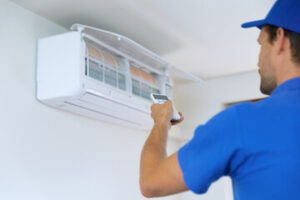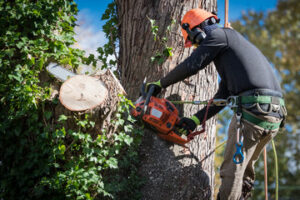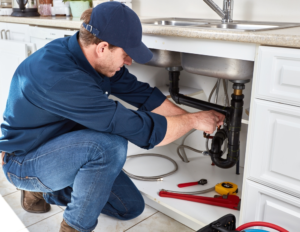Air Conditioning Repair Orlando can be expensive. But many minor problems with your home system can be fixed by you before a service technician gets there.

For example, you can replace capacitors yourself by shutting off the power to the outside unit and removing its cover. You can also cut down weeds and trim back foliage to make it easier to access the evaporator coils.
The evaporator coil is the part of your AC that absorbs heat from the air circulating in your home. If it gets dirty, the system has to work harder and longer to bring your house up to a comfortable temperature, which can lead to higher energy bills and less efficient operation. Dirty evaporator coils also increase the amount of dust circulated in your home, which can trigger allergies for people who are sensitive to it.
The most common sign of a dirty evaporator coil is a reduction in your air conditioner’s cooling performance. Since a layer of dirt acts as an insulator, it prevents the coil from absorbing heat effectively. This can cause the AC to work overtime to cool your house, which can result in higher electricity bills.
Another sign is if your house feels warmer than usual despite the AC running. When the evaporator coil becomes dirty, it can trap hot air inside your home and lead to overheating of the compressor and the condenser. The dirt also restricts the flow of refrigerant, which leads to ice buildup on the coil.
Over time, the accumulated debris on the evaporator coil can cause mold and mildew growth. This, in turn, can lead to unpleasant odors in the home. When the coils become extremely dirty, they may even clog up completely, causing water to overflow and potentially damaging the interior of your air conditioning unit.
Your service technician will first blow air from a shop vac over the evaporator coil to loosen up most of the unwanted dirt and debris. Then, he or she will use either a detergent solution or commercially available coil cleaner to clean the rest of the dirt from the coil. This process is done with the system turned off to prevent any electric shock hazards.
It’s important to know that you shouldn’t attempt to clean your evaporator coil yourself. This coil is connected to the power supply of your air conditioner, so you’re at risk of getting electrocuted if you try to clean it with an electric wire or any other electrical tools. It’s always best to leave this job to your trusted service professional to ensure that your evaporator coil is clean and safe.
Dirty Compressor Coils
The compressor coil is an important component in your air conditioning system that works to absorb and dump heat throughout the system. As you can imagine, the coil must be clean in order to function properly. Dirt buildup makes it difficult for the AC to absorb and dump heat, which means your system has to run longer in order to cool your home. This results in higher electricity bills, especially during the hottest Florida months. The dirty coil also causes a decrease in your energy efficiency rating. This lower rating can affect the value of your home and make it more expensive to sell in the future.
A dirty condenser coil is a common problem that can be easily prevented with regular maintenance and cleaning by a professional. When you hire an HVAC expert to do the job, they will be able to properly clean your coils without damaging any of the other components or putting yourself at risk. They will also be able to catch any other potential problems and fix them before they get worse.
Some signs that your air conditioner’s condenser coil is dirty include an unexplained increase in your electricity bill, noisy operation, and the formation of ice on the unit. It is important to turn off the power to your outdoor unit before performing any maintenance on it. This prevents any electrical accidents from occurring while you are working on the system.
After you have turned off the power to your outdoor unit, you can start by removing any leaves or other debris that may be clogging the coil. Once you have removed any obstructions, you can use a wet/dry vacuum or spray cleaner on the coil. Be careful when cleaning the coil, as it can be damaged if it is scrubbed too hard or using harsh chemicals.
Once you have cleaned the coil, you will need to reassemble it and restore power to your unit. Once the system is reconnected, you should test it to ensure that the coil is functioning correctly. Make sure to schedule regular maintenance with a reputable HVAC dealer who offers air conditioning services in your area. Ideally, you should sign up for a Priority Comfort Club so that your air conditioner will receive regular maintenance and attention to avoid issues like a dirty coil in the first place.
Damaged Coolant Lines
Coolant lines are important to your air conditioning system, because they convert refrigerant fluid from liquid to gas before it can absorb heat and cool the indoor air. If these lines develop cracks or holes, your AC won’t be able to produce cool air. Your technician will use specialized tools to locate and repair any leaks in these lines.
The upper radiator hose is the most common source of a coolant leak. It’s very important to get this repaired, because if it breaks open while you’re driving, your engine could overheat and melt or break important components.
It’s possible to get a leaking lower radiator hose, but this is less common because the hose is usually well protected. If your hose is damaged, you can usually tell by looking at it; the ends are often softer than the middle of the hose. Also, if you squeeze the hose near its connectors, you may be able to feel gaps or channels inside the hose. This is called electrochemical degradation (ECD) and it’s caused by different metals in your car’s cooling system creating an electrical charge that attacks the hose material.
If your AC is older and uses the type of refrigerant known as R-22, then it’s very important to have any leaks attended to quickly. This is because the government has ordered that this compound be phased out, and supplies are dwindling. Once they are gone, your AC will need to be replaced instead of repaired.
A leaking drain line can be a very serious problem for your air conditioner, because it allows water to infiltrate the unit and damage the compressor coils and other mechanical parts. If you notice that your AC unit is leaking refrigerant or that the water drain tube on the outdoor unit has developed a clog or crack, then it’s time to call for an air conditioning service in Boca Raton.
A professional can repair most leaks in the system, but you should always have a licensed expert handle any work with the hazardous refrigerant. It’s illegal for anyone without an EPA-approved Section 608 license to handle refrigerant, so don’t try to fix the problem yourself. If you’re not sure who to call, check with your local HVAC association for referrals.
Low Freon Levels
An air conditioning unit only cools your home if it has sufficient refrigerant. The refrigerant absorbs heat from the indoor air and transfers it outdoors to prevent heat buildup. Low refrigerant levels cause an AC to work harder to maintain the cooling process, which can result in higher electricity bills and more frequent breakdowns. There are many signs that your AC is low on Freon. One of the most obvious is if your vents are blowing warm or room temperature air instead of cool air. Another is if your air conditioner seems to be taking longer to cool your house than usual.
Refrigerant is a special chemical that is pressurized in the compressor and circulated throughout the system. Leaks in the air conditioning system can cause the refrigerant level to drop, which affects how well your air conditioner works. If you notice a leak, you should immediately call an HCAC repair technician.
Hissing or bubbling sounds are another sign that the air conditioning system is low on Freon. These noises are created by gaseous Freon escaping from the air conditioning system. Freon isn’t used up in the same way as gasoline, so these hissing sounds are a clear indication that you need to schedule an AC service appointment.
In addition to hissing sounds, low refrigerant can lead to ice formation on the evaporator coil. The ice forms when the cold Freon attracts moisture from the air. Once the ice forms, it restricts airflow and causes your air conditioner to lose cooling efficiency.
Finally, low refrigerant can force the compressor to work harder and longer in order to maintain the cooling process. This increased workload can lead to overheating and damage to the compressor, requiring expensive repairs or even replacement.
The most important thing to remember is that you should never add Freon to your air conditioning system on your own. Air conditioning specialists are the only people who have the right equipment to properly test your system for refrigerant levels and determine the source of the leak. For this reason, it is crucial to have a qualified professional perform any air conditioning service.








